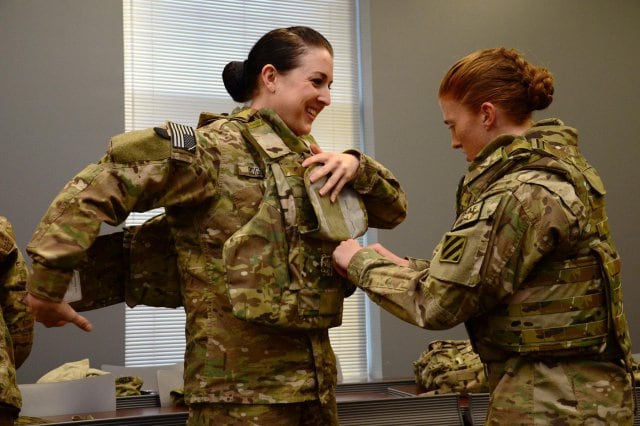With female soldiers moving toward more and more involved combat roles, the Army had to re-think body armor, particularly how to tailor it to the female form.
But that has become the tip of the iceberg: a new deal with a contractor could have a much wider range of applications through a profile of thousands of soldiers' body types allowing for all kinds of better-fitting gear.
Manhattan start-up Body Labs officially started its $825,000 two-year contract with the Army in September, and along with that will come data and modeling that could better outfit soldiers in the future. On Monday they unveiled a vision for the future, which includes a more scientific, analytic and efficient approach to sizing, starting with body armor.
"Our vision of the future is a soldier walks into basic training, the Army scans you with a body scanner, and you walk out with boots and helmet that fit you really well. Not custom made because that's too expensive, but that fit really well," said CEO and founder William O'Farrell. "I think they understand the broader need."
The contract includes access to scanning capabilities, data and analytic tools that could turn the Small-Medium-Large-XL continuum on its head. Brian Corner, a PhD and research anthropologist for the Army's Natick Soldier Systems Center, said in an email to Army Times that a lot of applications and analysis would become possible for the first time.
"Previously, we worked with standing manikins and only one or a few body shapes and sizes. Thus, the work done by Body Labs provides a much richer design and engineering environment," Corner said. "My opinion, and the Army may have a different opinion, is that the software capability provided by Body Labs will change fundamentally the design and engineering environment."
While female soldiers have already tested out new armor that adjusts for some of these differences from men's body shapes, this technology would even further add to options and ways armor — and other gear — can become more comfortable and improve in its performance. Corner said key assumptions include a robust database and a fairly easy way to scan soldiers.
O'Farrell started the company with a trio of other founders from Brown University that include experts in computer science and other systems and other fields in the Max Plank Institute for Intelligent Systems. The company has accumulated a database of about 12,000 soldiers, half of them women, providing 3-D avatars that will give the Army a statistical understanding of the different body types and shapes, including how the body moves and shifts into different positions.
The company started in the last year but some of the group's research was funded by the Army as far back as 2009.
While the data and more varied body types addressed may increase the number of sizes, O'Farrell said, the more accurate understanding of the Army's population of body types will help to more comfortably outfit more soldiers with less waste in over-produced sizes.
"Small, medium and large don't address the 3-D shape of the body. Shapes of sizes will be much more accurate to fit the population that's targeted," said O'Farrell, a Brown grad and an adjunct business professor at Columbia University.
In addition, Corner also acknowledged another possible source of savings: testing new models on a representative, diverse array of body types can earlier catch design problems that might impair impinge movements, among other fit concerns.
O'Farrell said the Army, in particular Natick, will have the ability to make the economic choices on the number of sizes to produce and the design of the vests — and whatever else the Army chooses to use the data to produce.
"The big picture is understanding the geometry of the human body. From there you connect to everything the body touches," O'Farrell said.




